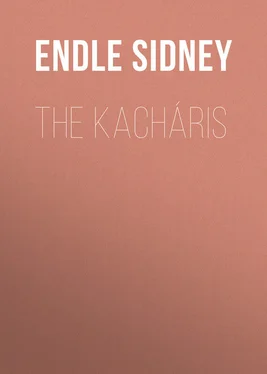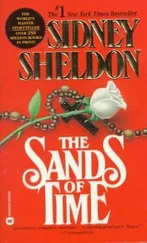Sidney Endle - The Kacháris
Здесь есть возможность читать онлайн «Sidney Endle - The Kacháris» — ознакомительный отрывок электронной книги совершенно бесплатно, а после прочтения отрывка купить полную версию. В некоторых случаях можно слушать аудио, скачать через торрент в формате fb2 и присутствует краткое содержание. Жанр: foreign_antique, foreign_prose, на английском языке. Описание произведения, (предисловие) а так же отзывы посетителей доступны на портале библиотеки ЛибКат.
- Название:The Kacháris
- Автор:
- Жанр:
- Год:неизвестен
- ISBN:нет данных
- Рейтинг книги:5 / 5. Голосов: 1
-
Избранное:Добавить в избранное
- Отзывы:
-
Ваша оценка:
- 100
- 1
- 2
- 3
- 4
- 5
The Kacháris: краткое содержание, описание и аннотация
Предлагаем к чтению аннотацию, описание, краткое содержание или предисловие (зависит от того, что написал сам автор книги «The Kacháris»). Если вы не нашли необходимую информацию о книге — напишите в комментариях, мы постараемся отыскать её.
The Kacháris — читать онлайн ознакомительный отрывок
Ниже представлен текст книги, разбитый по страницам. Система сохранения места последней прочитанной страницы, позволяет с удобством читать онлайн бесплатно книгу «The Kacháris», без необходимости каждый раз заново искать на чём Вы остановились. Поставьте закладку, и сможете в любой момент перейти на страницу, на которой закончили чтение.
Интервал:
Закладка:
Such, briefly told, are the few outstanding events in a life wholly devoted to pastoral work, of which little was known outside his native flock. It was Mr. Endle’s repeatedly expressed wish that he might end his life and be laid to rest among his Kacháris. This wish was not fulfilled. Towards the end of 1905 it was evident that his persistent disregard of his personal comfort in an enervating climate had taxed a naturally robust constitution. He was induced with some difficulty to pay a brief visit to England for rest and change. He spent this holiday chiefly in preaching for his mission and visiting old friends. He was soon, perhaps too soon, back at his work. It could no longer be hidden from himself or others that he had overtaxed his strength. This, however, caused him no disquietude. He had done his day’s work, and was cheerfully ready to take his departure. In July 1907, he could struggle no longer against growing weakness, and was placed on one of the little mail steamers that ply up and down the Brahmaputra, in the hope that river breezes, rest, and change of scene might bring about some restoration to health. He himself, however, knew that his end was near, and he passed away, painlessly and peacefully, on the river bank at Dibrugarh, close to the scene of his first independent missionary charge, entrusted to him more than forty years before.
So much by way of biographical introduction seemed necessary, not only as an inadequate and too brief memorial of a singularly unselfish and blameless career, but also as an explanation of some features in Mr. Endle’s book not usually found in anthropological manuals. Of the subject of the book itself I may now be allowed to say a few words, if only to show that it has an interest and importance, from an ethnological point of view, which are perhaps disguised by the author’s characteristically modest estimate of his task and of his power of dealing with it. The book is, primarily, a monograph treating of that branch of the Kachári race which lives in scattered hamlets along the foot-hills of the Himalayas in Northern Bengal and Assam, intermixed now with Hindu people who have intruded into what was once their undisputed home. In Assam proper the Hindus call them Kacháris; in Bengal they are known as Meches. 1 1 Mech, sc. Mleccha, barbarian, one who is ignorant of civilised speech.
Their own name for their race is Boṛo or Boḍo (the o has the sound of the English o in “hot”). Among this northern branch of the race is embedded the tribe of the Koch, whose name is pronounced locally as if it were Koss, (to rhyme with our English “boss”). (Kachári, I may mention in passing, is also pronounced as Koss-āri.) The Koch have gradually become a semi-Hindu caste, most of whose members now talk the Indian Bengali or Assamese. It also contains the surviving remnants of the royal family of the great and powerful Koch empire, which, roughly, covered the same area as the present province of Eastern Bengal and Assam. It can be proved that the aboriginal members of the Koch caste within quite recent times spoke the Boṛo language. In the East of the Assam Valley was another powerful kingdom, that of the Chutiyas, whose language was another branch of the speech described in this book. The river names of the whole Brahmaputra Valley are Boḍo names, and it is demonstrable that the Boḍos were the aborigines of the Valley. In the great mass of hills, an outlying spur of the mountains of Upper Burma, which divide the Brahmaputra Valley from that of the river Surma which runs parallel to it from east to west are two more Boḍo groups. The most eastern of these comprises the Di-mā-sā, Great-River-Folk (di- means “river” or “water,”) people who were driven out of the valley of the great river Brahmaputra in historical times, and finally became rulers of what is now the great tea-planting district of Cachar or Kāchār. They either gave its name to or perhaps derived their Hindu soubriquet of Kachāri from this district. Of this branch of the race an interesting description will be found in the supplement to this book. At the western extremity of the range of hills is another group, the Garos, of whom an excellent account has lately been published by Major A. Playfair, I.A. (London, David Nutt, 1909). The Garos are of peculiar interest as members of the Boḍo family, because they were head-hunters within the memory of men still living.
Finally in the range of hills in the south of the Surma Valley, there are the Tipperahs whose language is obviously a branch of the ancient Boḍo speech; quiet inoffensive people, ruled over by a semi-independent Raja who is also a great land-owner in the British districts of Tipperah and Sylhet.
Now, the anthropologists rightly caution us against rashly concluding that a common speech, where races are in contact, implies a common origin, since everywhere, and especially among people who use an unwritten language, nothing is more common than the borrowing of a neighbouring tongue. But where, as here, we have five absolutely separate communities of semi-savage people, who nowadays are not so much as aware of one another’s existence, and yet speak what is to all purposes the same language, it is plain that they must have been united at no very distant date by some common social bond. The date cannot have been very distant, because in the unwritten speech of semi-savage people phonetic decay acts very rapidly, and a very few years may serve to disguise the relationships of adjacent and cognate tongues. No one who has heard members of the five branches of the Boḍo race speak their respective languages can fail to recognise that they belong to the same linguistic group. Moreover, this common Boḍo speech was, till within a few years ago, the language of the Koches, the dominant and ruling tribe in the great Koch kingdom, which survived, with something of its ancient prestige and power, long enough to be visited by an Englishman, Ralph Fitch, in Queen Elizabeth’s time. It would seem, then, that the language spoken in the ancient Koch kingdom, which extended from the Himalayas to the Bay of Bengal, was the Koch or Boḍo language, and the mass of the people must have been of Boḍo origin. In the Brahmaputra valley these Boḍos have survived in the midst of Hindu and Shan invaders and settlers, of whom those who are interested in the subject may read in Mr. E. A. Gait’s admirable History of Assam , (Calcutta, Thacker, Spink and Co., 1906). Here the anthropologist may come to the rescue of the historian. The Boḍo type of face and physical construction is, as Mr. Endle says, of an Indo-Chinese kind, easily distinguishable from the Arya-Dravidian type common in adjacent Bengal, and careful measurements in the Brahmaputra and Surma Valleys ought to show how far the old Koch element still persists, how far it has been obliterated by inter-marriage with Indian immigrants.
It may, however, be assumed that the population of the Koch kingdom, and therefore of its predecessor, the famous classical empire of Kāma-rūpa, of which Sanskrit scholars may read in the Mahābhārata (perhaps in a late interpolation in the epic) was chiefly Boḍo, of the same type as the humble folk who are the subject of Mr. Endle’s book. Kāma-rūpa was visited in the first half of the seventh century of our era by the famous Chinese traveller Hiuen Tsiang, whose interesting account of the land and people may be found at page 22 of Mr. Gait’s History . “They adore and sacrifice,” says the Chinese explorer, “to the Devas and have no faith in Buddha.”
It was apparently in the kingdom of Kāma-rūpa that there came into being that form of Hinduism whose scriptures are the later Purāṇas and the Tantras, the worship of Śiva and his Sakti, that form of the Hindu cult which, to this day and even in the temple of Kāli-ghāṭ in Calcutta itself, is distinguished by sacrifice by decapitation. In the earlier times of British rule, as readers of Mr. Gait’s book may find for themselves, the Hindus of Assam were much addicted to human sacrifice by beheading, and, to this day, the appropriate method of propitiating the terrible goddess Kāli, the “dark one” (who is also Dur-gā, “hard of approach”), is by bloody sacrifices. The Śaiva or Śāktā form of Hinduism would therefore seem to be due to an engrafting of Koch superstitions on the purer and humaner religious ideas imported into India by the Aryan settlers to whom we owe the Vedas and the religious literature based on those early pastoral hymns. From this point of view, it is important to bear in mind that the Garos were till lately headhunters, and that the Chutiyas were conspicuous, even in North-Eastern India, for their addiction to human sacrifices.
Читать дальшеИнтервал:
Закладка:
Похожие книги на «The Kacháris»
Представляем Вашему вниманию похожие книги на «The Kacháris» списком для выбора. Мы отобрали схожую по названию и смыслу литературу в надежде предоставить читателям больше вариантов отыскать новые, интересные, ещё непрочитанные произведения.
Обсуждение, отзывы о книге «The Kacháris» и просто собственные мнения читателей. Оставьте ваши комментарии, напишите, что Вы думаете о произведении, его смысле или главных героях. Укажите что конкретно понравилось, а что нет, и почему Вы так считаете.











